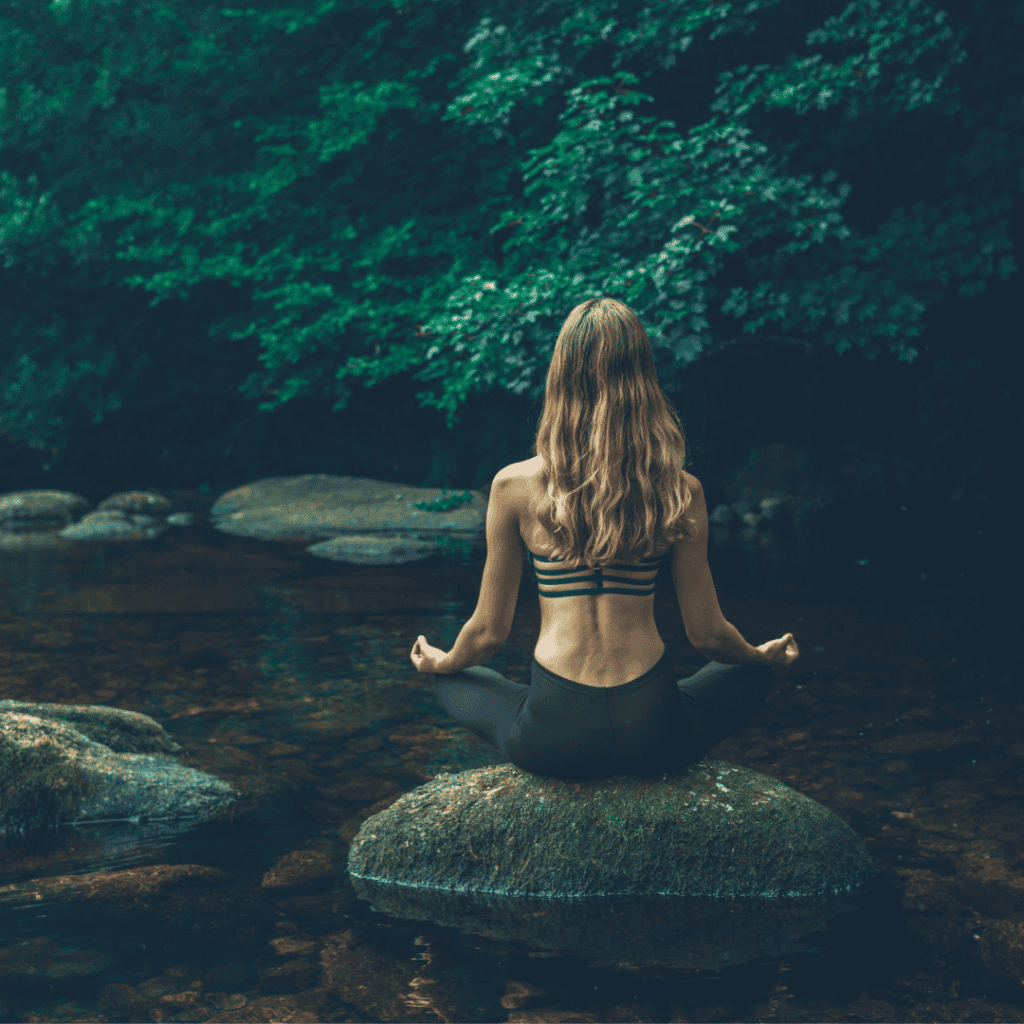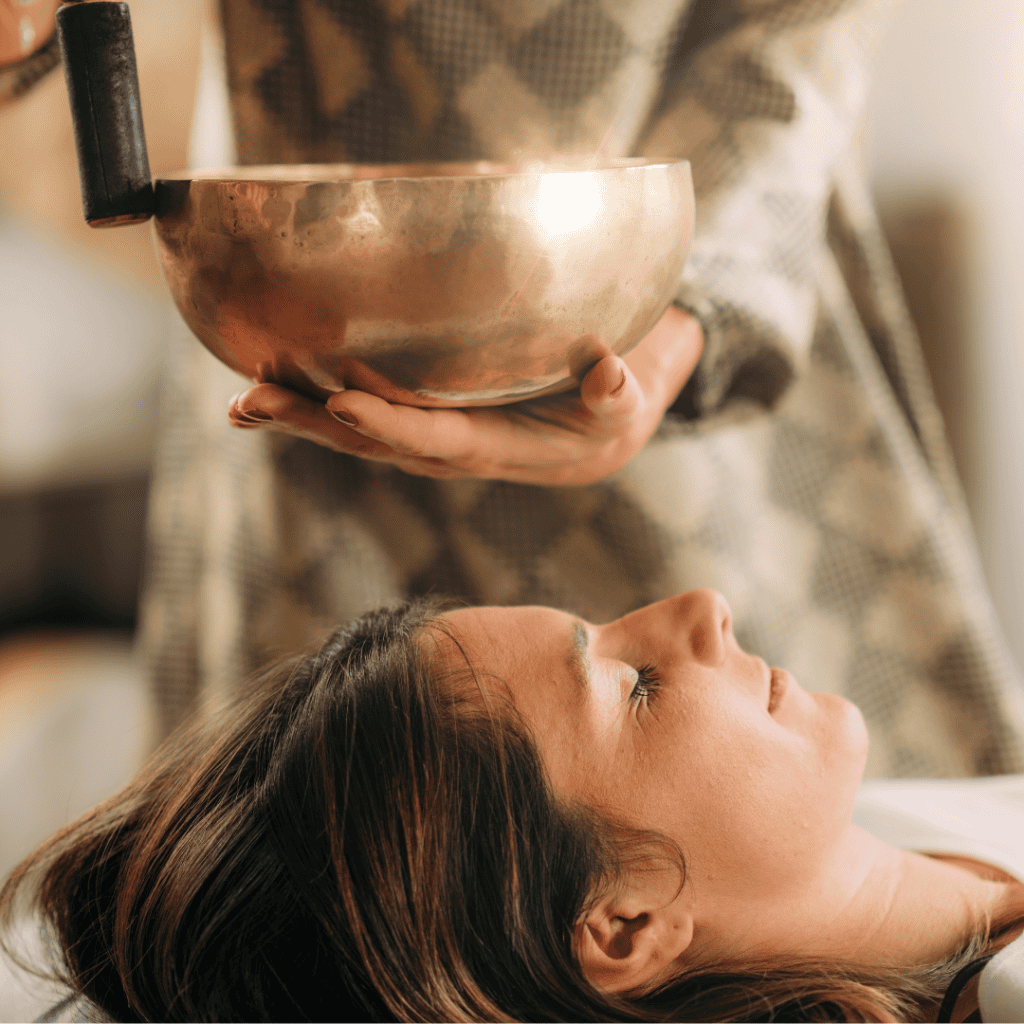Table of Contents
ToggleHow to Calm the Mind: Quick and Effective Techniques for Mental Peace
In today’s fast-paced world, it’s important for you to take the time to calm your mind. Your mental well-being and overall happiness depend on it. I’ve had to learn this lesson the hard way in my own life! By learning how to capture a sense of peace, you can better navigate through life and face challenges with a clear and focused mindset.
I will share 15 techniques to help you calm and quiet your mind, providing you with the tools needed to incorporate relaxation, mindfulness, and mental balance into your day-to-day routine. By following these methods, you’ll be on your way to a calmer, more peaceful state of mind.
Remember that everyone’s journey will look different, so it’s important to find the techniques that work best for you. As you read through and explore these methods, allow yourself the grace and open-mindedness to discover what truly resonates with you and brings that much-needed sense of calm and mental balance to your days.
1. Mindfulness Meditation
Mindfulness meditation is a powerful tool to help you calm your mind and improve your overall well-being. It has been proven to be effective in reducing anxiety, stress, anger, and negative moods. By practicing mindfulness meditation regularly, you can cultivate a greater sense of peace and serenity in your daily life.
Meditation for Beginners
Mindfulness meditation is hard to master. I am always working on my practice and I’ve learned that it’s okay to mess-up and let your mind wander so long as you recognize it and get yourself back on track.
If you’re new to mindfulness meditation, here is a step-by-step guide on how to get started:
- Find a quiet space: Choose a comfortable, quiet spot where you won’t be disturbed.
- Sit comfortably: Sitting in a comfortable position, either on a cushion or a chair.
- Set a timer: Start with 5-10 minutes and gradually increase the duration as you become more experienced.
- Focus on your breath: Pay attention to the sensation of your breath, inhaling and exhaling naturally.
- Observe your thoughts: As thoughts arise, simply acknowledge them without judgment and gently bring your focus back to your breath.
Remember, you’re not trying to stop your thoughts or get rid of them, but simply observe them as they come and go. With regular practice, you should start to notice a greater sense of calm and tranquility in your daily life.
2. Deep Breathing Exercises
Do you ever hold your breathe when you are feeling anxious or overwhelmed? I do! Deep breathing exercises have helped me regain parasympathetic function and relax when I’m feeling worked up. I recommend incorporating deep breathing exercises into your daily routine.
In this section, we’ll explore some different techniques you can incorporate to help calm your mind.
- Diaphragmatic Breathing: This technique involves breathing deeply into your diaphragm, allowing your stomach to rise and fall with each breath. To practice, find a comfortable position, either sitting or lying down. Place one hand on your chest and the other on your abdomen. Inhale slowly and deeply through your nose, allowing your stomach to rise, while keeping your chest still. Exhale slowly through your mouth, allowing your stomach to fall. Repeat this exercise for several minutes, focusing on the rise and fall of your abdomen.
- 4 Square Breathing: This method is my personal favorite! It encourages you to focus on the timing of your breaths, which can help relax your mind. To begin, close your eyes and take a slow, deep breath through your nose for a count of four. Then, hold your breath for a count of four. Finally, exhale through your mouth for a count of four. Repeat this cycle four times or until you feel a sense of calm. This breathing technique is easier than the 4-7-8 method, in my opinion, and I credit it with helping me fall asleep at night.
- Alternate Nostril Breathing: This technique can help balance the left and right sides of your brain while calming your mind. Sit comfortably and close your eyes. Using your right thumb, close your right nostril and inhale through your left nostril. Hold your breath for a moment, then release your right nostril and use your right ring finger to close your left nostril as you exhale. Inhale through your right nostril, hold your breath, then switch nostrils and exhale through the left. Continue this pattern for several minutes.
Take a few moments each day to practice these deep breathing exercises, and notice the positive impact they have on not just your mind, but your overall well-being.
If you find deep breathing exercises difficult or struggle with panic attacks, I suggest you consider the CalmiGo Breathing Device. I shared more about how the breathing device works here.
3. Progressive Muscle Relaxation (PMR)
I want to introduce you to Progressive Muscle Relaxation (PMR) because it’s a technique that can help you release tension and promote relaxation. By combining deep breathing exercises with progressive muscle relaxation, you can calm your mind.
Deep Breathing Exercises
We already covered some great deep breathing exercises and practicing some of those techniques is a great way to start progressive muscle relaxation.
Progressive Muscle Relaxation
So now that you’ve practiced deep breathing, it’s time to move onto Progressive Muscle Relaxation. PMR involves tensing and relaxing different muscle groups in a sequential manner to release tension and promote relaxation. Follow these step-by-step instructions:
- Get comfortable: Find a quiet space where you won’t be disturbed. Lie down or sit with your back supported, and make sure your clothing is loose.
- Start with your feet: Begin with your toes, scrunching them as tightly as you can for 5 seconds. Then, release and relax for 15 seconds. Feel the tension flowing out of your toes as they relax.
- Move up your body: Continue the process by tensing and relaxing the muscles in the following sequence. Hold each contraction for 5 seconds and relax for 15 seconds:
- Calves
- Thighs
- Glutes
- Abdomen
- Lower back
- Upper back
- Chest
- Shoulders
- Upper arms
- Lower arms
- Hands and fingers
- Neck
- Facial muscles
- Practice mindfulness: As you tense and relax each muscle group, pay attention to how the tension dissipates in your muscles, and the sensation of relaxation that follows. Your mindfulness can enhance the efficacy of PMR.
- Finish with deep breaths: After relaxing your facial muscles, take a few deep breaths and enjoy the calm and peaceful state your body has reached.
Incorporate this friendly guide into your routine as a way to calm your mind, regulate your nervous system, and reduce your heart rate. By practicing PMR regularly, you’ll find yourself feeling more centered and relaxed, improving your overall well-being.
4. Yoga and Stretching
Yoga and stretching are great ways to calm your mind and improve body awareness. Engaging in these activities can help you release tension and even address past traumas stored in your body.
Practicing yoga involves a combination of physical postures, breathing techniques, and meditation. These elements work together to promote relaxation, balance, and harmony between your mind and body. As you flow through various yoga poses, you can focus on your breath and bring awareness to how your body moves and feels.
Performing somatic exercises is another excellent method to relieve stress and connect with your body. Somatic exercises involve slow, gentle movements that allow you to explore your body’s sensations and better understand how it responds to stress. By consciously releasing tension and consciously observing your body’s response, you can facilitate deep relaxation and healing. Rewire Therapy offers some great somatic exercise classes taught by world-renowned therapists. Enter code Blooming at checkout for 50% off your first class.
Here are some simple yoga poses and somatic exercises you can try:
- Child’s Pose (Balasana): A gentle stretch that promotes relaxation and stress relief.
- Legs Up The Wall (Viparita Karani): This pose helps to calm your nervous system and relieve stress.
- Cat-Cow Stretch (Marjariasana and Bitilasana): A fluid sequence of movements that can increase spinal flexibility and body awareness.
- Somatic Pelvic Tilt: A gentle rocking motion that can release tension in your lower back and promote relaxation.
Yoga Nidra is another great yoga method for relaxation! Combining guided mental imagery and Shavasna, the goal of yoga nidra is to promote complete relaxation. I have found some wonderful free Yoga Nidra meditations on the Insight Timer app (also free). These meditations combine PMR and guided meditation. I highly recommend them!
5. Nature Therapy
Ecotherapy, also referred to as nature therapy, is a growing trend that emphasizes the importance of connecting with the great outdoors for personal relaxation and mental well-being. In this section, we will focus on engaging with nature as a means of therapy.
Engaging with Nature
There are several activities that you can incorporate into your daily routine to enjoy the therapeutic benefits of nature. Here are a few easy tips to help you experience the calming effects of Mother Earth.
- Step outside and breathe: Take some time every day, even if it’s just a few minutes, to step outside and breathe in the fresh air. This simple act can help ground you and leave you feeling refreshed and recharged.
- Practice yoga outdoors: Yoga is known to help calm the mind, and practicing it in nature can only amplify its benefits. Consider finding a quiet spot in a park, at the beach, or your backyard and taking a few minutes to practice your favorite yoga poses.
- Feed your senses: Engage your senses by actively noticing the colors, sounds, smells, and textures of nature. The more you immerse yourself in these sensory experiences, the stronger your connection to nature will become.
- Walk it out: Walking not only promotes physical health but can also help clear your mind. Aim to take a walk in a natural setting as often as possible, whether it’s a leisurely stroll or a brisk hike through a wooded trail.
- Get your hands dirty: Gardening is another great way to interact with nature while also providing stress relief. Planting and tending to flowers, herbs, or vegetables can be a rewarding and mindful hobby.
- Grounding or earthing: Getting outside is important but many people believe that we receive more benefits from the outdoors when our feet and body are touching the earth. Walking shoeless outside, at the beach, through the woods, or even in your backyard, will help you achieve this. I also love laying in the grass and looking up at the sky at night and counting the stars. It’s so relaxing!
By incorporating these activities into your daily life, you can effectively make the most of the calming influence that nature has to offer. Remember, ecotherapy can be as simple or as involved as you like, so find the techniques that work best for your lifestyle and start embracing the wonderful gift of the great outdoors.
6. Journaling and Self-Reflection
One way I decompress and relax is through journaling. This practice involves exploring your thoughts and feelings, bringing clarity to your emotions and helping you better understand yourself. Sometimes it’s beneficial when you are overwhelmed to just write for as long as you can to release that feeling too.
Art and Writing Therapy
Incorporating creative activities such as art and writing into your daily routine can have numerous benefits on your psychological wellbeing. Whether it’s writing in a journal, painting, or doodling, these activities encourage you to express yourself honestly and authentically.
Benefits of Art and Writing Therapy:
- Reduces stress
- Encourages self-expression
- Improves communication skills
- Promotes problem-solving abilities
- Enhances mental clarity
To experience these benefits, try implementing the following activities into your schedule:
- Morning pages: Write down your thoughts and feelings first thing in the morning, without editing or censoring yourself. This practice can help you release any negative emotions and clear your mind for the day ahead.
- Gratitude journaling: Every day, write down three things you are grateful for. This can help shift your focus from what’s going wrong to what’s going right in your life.
- Creative projects: Did you ever doodle in class as a kid? Engaging in artistic activities such as painting, drawing, or pottery, or doodling can stimulate your creativity and provide a therapeutic outlet for expressing your emotions.
Making a conscious effort to incorporate these practices into your life is an essential step in your journey towards mental calmness. Remember, the key is to be patient with yourself and enjoy the process of self-discovery through journaling and creative expression.
7. Mindful Walking
Mindful walking is a form of meditative walking that helps you connect with your surroundings and be present in the moment. By focusing on your breath and the sensation of each step, you can ground yourself, relieve stress, and achieve a sense of relaxation. This practice is particularly beneficial for those who struggle with traditional seated meditation and prefer an active alternative.
To practice mindful walking effectively, follow these simple steps:
- Find a suitable location: Choose a quiet, peaceful spot free from distractions. This can be indoors or outdoors, depending on your preference and the weather.
- Start with comfortable posture: Stand tall with your feet firmly on the ground, about hip-width apart. Keep your arms relaxed, either by your sides or with your hands loosely clasped in front of you or behind your back.
- Set your intention: Whatever it may be, set a mindful intention for your walk.
- Take a few deep breaths: Close your eyes and take a few slow, deep breaths. Notice the sensation of air entering and leaving your body. This will help you become grounded and focused.
- Begin walking: Start walking at a comfortable pace, paying attention to the sensation of each foot touching the ground and lifting off again.
- Observe your surroundings: As you walk, take in the sights, sounds, and smells around you. Try to be fully present, without judgment.
- Focus on your breath: While walking, maintain awareness of your breath. Try to synchronize your breathing with your steps, inhaling for a certain number of steps and exhaling for the same number.
- Gently return your focus: If you notice your mind wandering or getting lost in thought, gently bring your attention back to your breath and the sensation of walking.
You don’t need to practice mindful walking for a specific length of time. You can do it for just a few minutes or as long as you’d like. I like to imagine a golden orb floating through my body and relaxing different parts of it while I walk. It really helps me.
The key is to cultivate mindfulness and presence during the activity. As you continue to practice, you may find that mindful walking becomes a natural and enjoyable way to find peace and calm throughout your day.
8. Guided Imagery and Visualization
Guided imagery and visualization techniques are powerful tools for calming the mind. By using mental exercises, you can create a personalized relaxation plan that helps you effectively manage stress and anxiety.
Creating a Personalized Relaxation Plan
- Choose a theme: Pick a calming scene that resonates with you, such as a peaceful beach, a serene forest, or a tranquil garden. This setting will serve as the backdrop for your guided imagery scripts.
- Craft your script: Develop a narrative that describes your chosen scene in detail. Use descriptive language that incorporates the five senses: sight, sound, smell, taste, and touch. Your script should guide you through the scene, allowing you to fully immerse yourself in the experience. Here’s an example; “You’re walking on a pristine white-sand beach. As you feel the warm sand beneath your feet, the gentle waves lap at the shore. In the distance, seagulls caw, riding the salty sea breeze that carries the scent of the ocean. You take a deep breath and taste the salty air, feeling a sense of peace and tranquility wash over you.”
- Include relaxation techniques: Integrate deep breathing exercises and progressive muscle relaxation into your script. For example, instruct yourself to take deep, slow breaths as you inhale the scent of the ocean.
- Practice your script: Familiarize yourself with the script and recite it either internally or aloud, allowing yourself to become fully immersed in the experience. You can also use audio recordings of your script or work with a friend who can guide you through the visualization.
I personally love guided meditations that do this and you can find many of them on the Insight Timer app and they are free!
9. Aromatherapy
I love using essential oils for calming my body! I use of essential oils, which are derived from plant extracts paired with a carrier oil like coconut oil, and apply them to different points on my body.
Calming essential oils:
Here’s a list of essential oils that are known for their calming properties:
- Lavender
- Chamomile
- Ylang-ylang
- Bergamot
- Clary sage
- Sandalwood
- Vetiver
Any earthy smelling oil is very grounding and good for anxiety so if you aren’t sure about what oil might work for you, start with one that smells like dirt!
For depression, choose citrus oils.
- lemon/lime
- orange
- bergamot
- Ylang-ylang
How to use essential oils for relaxation:
There are several ways you can use these essential oils to achieve the perfect calming atmosphere:
- Diffuse: Use an aroma diffuser to disperse the essential oil molecules into the air, creating a soothing and pleasant environment.
- Massage: Dilute your preferred essential oil with a carrier oil, such as almond or coconut oil, and gently massage on your temples, wrists, or other pulse points.
- Inhale: To get an instant calming effect, add a few drops of your favorite essential oil to a cotton ball, tissue, or even on your palms, cup them, and then take a deep breath.
- Bath: Create a relaxing bath by adding a few drops of essential oils to your warm water, and let it therapeutic properties wash over you.
Essential oils are highly concentrated, so a tiny drop goes a long way!
10. Music and Sound Therapy
This is one of my favorite calming tools! Sound therapy is a powerful tool to help individuals seeking relief from stress, anxiety, and several other mental health-related issues. With a variety of calming music and sounds, you can soothe your mind at any moment. In this section, we will discuss different music and sound options, beneficial for calming the mind.
Sound bath meditation is an immersive experience involving crystal bowls and other resonant instruments. The sounds produced by these instruments are designed to relax you, as they bring your attention to the present. Some even find it helpful in enhancing their spiritual journey.
Another effective therapy is binaural beats. When two different frequencies are introduced to each ear, the brain perceives a third frequency. This encourages brain waves to synchronize with the intended state, inducing a state of tranquility and contentment.
Natural sounds like ocean waves can take you to a serene mental environment. The rhythmic patterns create an immersive experience that brings your mind into a peaceful state. To get the most benefits from ocean waves, try to focus on the ebb and flow, imagining a sandy beach and a gentle breeze.
Various forms of noise can also provide calming effects. Brown noise features low-frequency sounds that envelop the listener in a warm and comforting cocoon. On the other hand, green noise contains more mid-range frequencies, similar to the natural world’s background hum. Pink noise focuses on a balance between lower and higher frequencies, promoting a sense of well-being.
Another calming option is music tuned to 432 Hz. Known as the “healing frequency,” sound produced at this frequency is believed to encourage a deeper sense of relaxation and mental clarity.
With these options in mind, curate your personalized calming playlist. Remember to include:
- Sound bath meditation
- Binaural beats
- Ocean waves
- Brown, green, and pink noise
- Music tuned to 432 Hz
Explore these soothing musical options and observe how they impact your mental state. Remember, the more consistently you introduce calming music and sounds into your routine, the more effective they’ll be in helping you relax and achieve peace of mind.
11. Digital Detox and Relaxation Techniques
It can be so hard to unplug and put your phone down? Why? We are so addicted to them! This is why it’s important to take a step back and engage in a digital detox to help improve your mental well-being.
Electronic devices emit blue light that can interfere with the production of the neurotransmitter melatonin. Melatonin plays a crucial role in regulating your circadian rhythm, helping you maintain a healthy sleep schedule. Therefore, reducing your exposure to blue light can bring balance to your circadian rhythm, thus promoting a relaxed state of mind.
Here are some helpful tips to guide you through your digital detox journey:
- Set boundaries: Allocate specific times for using electronic devices and stick to those boundaries. For example, avoid screens at least 1 hour before bedtime.
- Be mindful: Be aware of how often you check your devices and try to consciously reduce your screen time, especially during leisure hours.
- Prioritize face-to-face communication: Engage in more in-person interactions rather than relying on screens to connect with others. This strengthens social bonds and can help alleviate feelings of loneliness.
- Create a relaxing environment: Keep devices out of your bedroom or other relaxation spaces. This will help your brain associate these areas with relaxation and promote a sense of calm.
12. Tai Chi and Qigong
Tai Chi and Qigong are ancient Chinese practices known for their calming and meditative effects on the mind. Both involve slow, controlled movements and deep breathing techniques that help to promote relaxation, reduce stress, and ease anxiety. As you engage in these exercises, you’ll find your mind becoming clearer and more focused.
To get started with Tai Chi and Qigong, here is a simple routine tailored to beginners:
- Warm-up: Begin by gently swinging your arms back and forth, loosening your muscles and joints. This light warm-up can last for about 2-3 minutes.
- Stretch: Slowly stretch your legs, arms, and torso to promote flexibility and mobility. Hold each stretch for 15-20 seconds and focus on your breathing.
- Form: Learn a basic Tai Chi or Qigong form, such as the Grasping the Bird’s Tail or Wave Hands Like Clouds. Break down the form into individual movements and slowly practice each one.
- Grasping the Bird’s Tail involves these steps:
- Start in a standing position, feet shoulder-width apart, and knees slightly bent.
- Bring your hands together, one hand on top of the other.
- Shift your weight to one side and extend your arms, following the movement of the hand on top.
- Slowly, switch the positions of your hands and shift your weight to the other side.
- Wave Hands Like Clouds:
- Start in a standing position, feet shoulder-width apart, and knees slightly bent.
- Bring your hands up in front of your body, with palms facing you.
- Shift your weight to one side while slowly moving hands in a circular motion.
- Shift your weight to the other side and move your hands in the opposite direction.
- Grasping the Bird’s Tail involves these steps:
- Meditation: End the session with a 5-minute meditation, focusing on your breath and allowing your mind to find stillness and peace.
Remember, the key to truly experiencing the calming benefits of Tai Chi and Qigong is consistency and patience. As you practice regularly, you’ll begin to appreciate the full range of emotional and physical benefits these ancient practices offer. So, take a deep breath and embark on this journey to a more relaxed and centered state of mind.
13. Mindfulness-Based Stress Reduction (MBSR)
Mindfulness-Based Stress Reduction (MBSR) is a structured program designed to help you reduce stress and enhance your well-being. Originated by Dr. Jon Kabat-Zinn in the late 1970s, MBSR has gained recognition worldwide for its effectiveness in helping people manage stress and cope with various life challenges.
Key Components
1. Mindfulness Meditation: MBSR incorporates mindfulness meditation, which involves bringing your full attention to the present moment.
2. Body Scan: Another essential element of MBSR is the body scan. It involves mentally scanning your body from head to toe, observing any sensations or tension that you may feel.
3. Gentle Yoga: MBSR incorporates gentle, mindful yoga poses to ease physical tension and increase body awareness. The focus is not on intense stretches or perfect alignment, but rather on connecting with your body in a compassionate and nurturing manner.
Incorporating these practices into your daily life can help you cultivate mindfulness and reduce stress. As you become more familiar with MBSR, you may begin to notice positive shifts in your overall well-being and your ability to navigate life’s challenges with greater ease.
14. Laughter Therapy
Did you know that laughing has therapeutic effects on the mind and body? When was the last time you really laughed? How did you feel afterwards?
Laughter therapy is an excellent way to reduce stress, improve your mood, and maintain overall mental well-being. It’s a natural mechanism that releases endorphins—your body’s feel-good chemicals—helping you feel more relaxed and happy. Plus, it’s contagious and can even foster social connections!
Here are a few laughter exercises and activities you can try:
- Fake it till you make it: Even if you don’t feel like laughing, start by faking it. This may feel weird at first, but your body doesn’t differentiate between real and fake laughter, and you’ll still get the same benefits. Eventually, you might find yourself genuinely laughing!
- Laughing meditation: To start, take a deep breath, and as you exhale, laugh out loud. Repeat this process for a few minutes, focusing on the sound and sensation of laughter. You’ll feel lighter and relaxed after the session.
- Watch something funny: Enjoy your favorite comedy show, movie, or stand-up act. For me, it’s Ted Lasso! I
- Laughter exercises with a partner: Get a friend involved and try various laughter games such as the laughter duel, in which you take turns trying to make each other laugh without touching one another.
Laughter therapy is all about having fun, so make it a part of your daily routine and experience the joy it brings to your life!
15. Progressive Relaxation for Sleep
This technique helps release tension and calm your mind, leading to better sleep and relaxation. Focus on systematically tensing and relaxing different muscle groups, and soon you can become more aware of physical sensations, making it easier to identify and release tension in your body.
Try this:
- Find a comfortable position – Lie on your back with your legs slightly apart and your arms by your sides. You can place a pillow under your head and knees for added comfort.
- Take deep breaths – Gently close your eyes and focus on taking slow, deep breaths. Inhale through your nose for four counts, then exhale through your mouth for eight counts. Repeat this process for a few minutes to establish a calm, steady breathing pattern.
- Begin with your feet – Focus on your feet and slowly tense the muscles as tightly as you can. Hold for a count of five, then release and relax. Notice the difference between the tense and relaxed state. Pause for a few seconds and then move up your body relaxing each muscle group.
As you work through each muscle group, be sure to maintain slow, deep breaths, and to pause and relax between each step.
Your mind should feel calmer and more at ease, setting the stage for a restful night’s sleep. Remember that practice makes perfect, so continue integrating this progressive relaxation routine into your bedtime ritual for maximum benefits.
Final Thoughts
I suggest trying a couple of these relaxation methods for a few weeks before adding more or changing things up. The goal is not to overwhelm yourself – this is supposed to be a calming process!
- Start with deep breathing exercises to help you relax and focus on the present moment.
- Try meditation to bring your mind to a tranquil state, even if it’s just for a few minutes each day.
- Engage in physical exercise, such as yoga or tai chi, which can improve mental clarity.
Remember to be patient and kind to yourself during this journey. It’s important to keep practicing these techniques consistently to achieve a long-lasting sense of peace and tranquility and to create healthy habits too. With dedication and practice, I hope you’ll find your way to a calmer mind.











